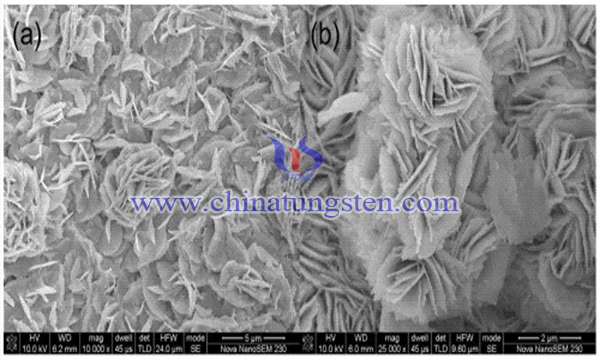Bismuth Tungstate Films Preparation
- Details
- Category: Tungsten Information
- Published on Wednesday, 06 February 2019 21:44
Bismuth tungstate Bi2WO6 is a new photocatalyst material. Because of its non-toxicity, low cost, high stability, easy preparation and good visible light response, Bi2WO6 has broad application prospects in light, electrochromic materials, photoelectrochemical hydrogen production, photocatalytic degradation of organic compounds and solar cells.

Bismuth tungstate thin films have good photoelectric properties, inherent wide band gap (2.5-2.8eV) and good visible photoelectric response. However, the photogenerated electrons and holes of nanocrystalline thin films are easy to recombine, which leads to poor photoelectric properties of thin films.
Later, researchers found that low-dimensional nanostructured films can not only improve the specific surface area of films, provide more chemical active sites, but also reduce the distance of photogenerated electrons in materials, and reduce the photogenerated electron-hole recombination rate. At present, nano-flake and flower-like bismuth tungstate films can be prepared by using conductive glass as the substrate and sodium tungstate as the tungsten source through the following schemes:
After cleaning the tungsten plate with thickness of 0.5mm, reserve it. Bismuth nitrate solution was obtained by adding 0.1g Bi(NO3)3·5H2O to 50 mL nitric acid solution with 1 mol/L concentration, stirring and fully dissolving; the washed tungsten plate was placed in the inner lining of the reactor, and then the nitric acid solution of bismuth salt was poured into the reactor for 12 hours at 180 ℃; when the reactor was cooled to room temperature, it was taken out, washed with ethylene glycol and water for 2-3 times, and dried at 200 ℃ for 6 hours. Bismuth tungstate thin films were obtained in an hour.
It was found that the bismuth tungstate films grown perpendicular to the substrate. The films grown perpendicular to the substrate can not only increase the specific surface area of the films, provide more chemical active sites, but also reduce the transmission distance of photogenerated electrons in the materials, and reduce the photogenerated electron-hole recombination rate, which is conducive to improving the photoelectric properties of the films. The morphology of bismuth tungstate film is nano-flower-like. The film has uniform morphology, good adhesion, good visible light response and high photoelectric properties.
- Tungsten Oxide Manufacturer & Supplier, Chinatungsten Online: www.tungsten-oxide.com
- Tungsten News & Prices of China Tungsten Industry Association: www.ctia.com.cn
- Molybdenum News & Price: news.molybdenum.com.cn
- Tel.: 86 592 5129696; Fax: 86 592 5129797; Email: sales@chinatungsten.com



 sales@chinatungsten.com
sales@chinatungsten.com